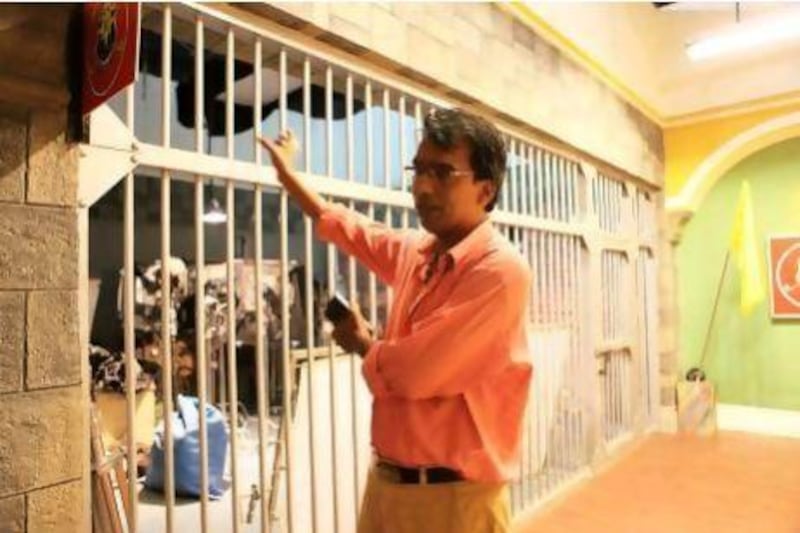MUMBAI // Every evening at 10.30, fans of the award-winning Hindi sitcom FIR tune in to watch Chandramukhi Chautala solve cases from her small-town police station in the Indian state of Haryana. The "station", however is a former toothpaste factory on Mira Road 1,500 kilometres away in Mumbai.
Over the past decade, the set design and television filming business has exploded on that road in north-west Mumbai, spurred on by the arrival of cable television in India. With it came soap operas, dramas, sitcoms, game shows and reality television.
"Business is booming," Rajesh Beri, a screenplay writer for television and movies, said about set design.
One of Mr Beri's soap operas for television, called Bhabhi (sister-in-law in Hindi), ran for 1,328 episodes, on the same set from 2002 to 2008.
Sagar Upadhyay and Vilas Birajdar, art directors with KV Arts, in Mumbai, spent 20 days turning the former toothpaste factory into a police station, with a jail and replicas of AK-47s in a glass cabinet.
Bungalows, police stations, or hospitals can be re-created in the space, which consists of four floors covering 30,000sq ft, said Mr Upadhyay.
"There are always new challenges. What are we building today? A hospital, a train station?" said Mr Birajdar.
To meet the increasingly elaborate demands of art directors, Mr Birajdar and Mr Upadhyay maintain a vast library of references books on everything from architecture to textiles and tribal artefacts.
"You never know what a writer comes up with and what a producer agrees to. For that we have to be ready to create whatever sort of set they want us to create," said Mr Upadhyay.
It all began with the game show Kaun Banega Crorepati, India's version of Who Wants to Be a Millionaire, which first aired in 2000.
The designers re-created the studio set-up of the American version of the show, "which raised the bar for set design", said Mr Beri. "It had more than double the number of lights, props and music than any set built in India previously."
The show's success was a boon to Mumbai's set designers and art directors.
Until Kaun Banega Crorepati aired, the set-design business had been declining in Bollywood, the mostly Hindi-language film industry based in Mumbai. From 1913, when the first feature film was made in India, until the 1960s, every Bollywood film was shot in a studio. In the 1970s, directors began shooting in outdoor locations, mostly in Kashmir. When the insurgency broke out there in the 1980s, Kashmir was replaced by Switzerland for those with big budgets. Most set designers in India were relegated to working on low-budget films.
The growth of cable television has breathed new life into the craft.
"On TV even if a girl is running and a gang is chasing her through a dark, thick, forest on a lonely road, it is a set," said Mr Beri.
"You want to put the carpet shop next to the guy selling flowers, while the man across the street is selling sweets. You could take months scouting for that exact location you have in mind as an art director, or you could create that on a set," he said.
Working within a studio space allows directors to be more creative, said Mr Beri. "You want to put the Taj Mahal beside the Eiffel tower. Sure, why not?"
The main reason that television shoots almost exclusively in studio is the time constraint.
"Soap operas are shot daily, edited overnight and have to delivered by the next day," said Rajesh Nair, a producer who worked on the blockbuster Bollywood gangster film Kaminey.
After the success of Kaun Banega Crorepati, "the demand for studio space in a place like Mumbai couldn't keep up", said Mr Beri. "There were only five or six studios, who were charging very heavily."
At the same time, factories were being forced to close by the Mubai government to contain pollution. The television industry rushed in to convert them into studios and sets.
Those factories on Mira road have now become the heart of Indian television. Prices, however, have remained high. Mr Birajdar said that creating a set for a show such as FIR can cost upwards of 20 million rupees (Dh73.4m), dwarfing the budgets of most Bollywood films.





